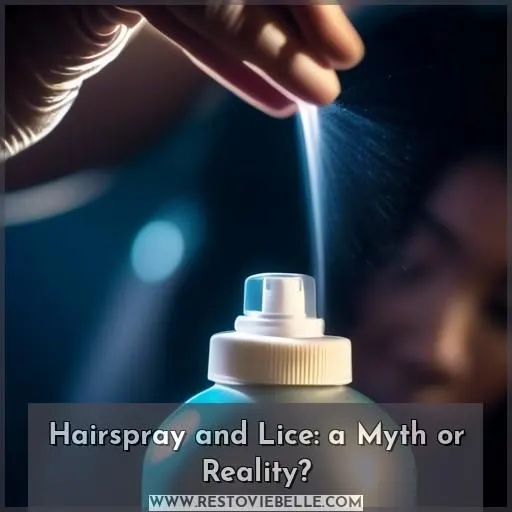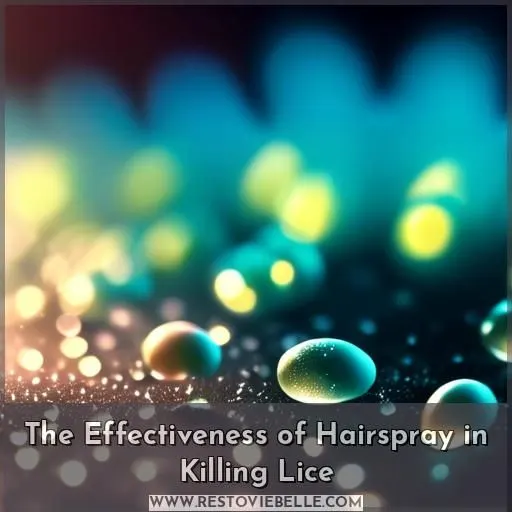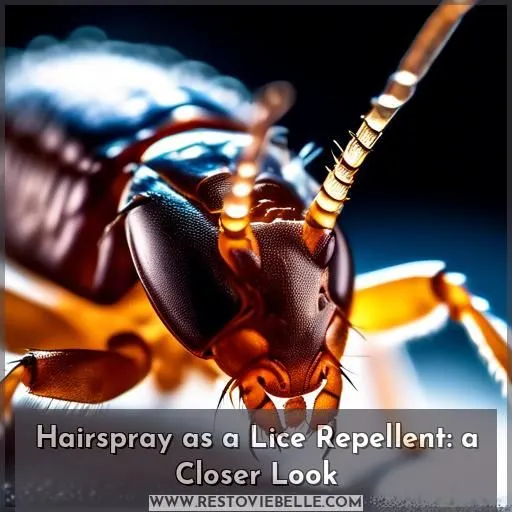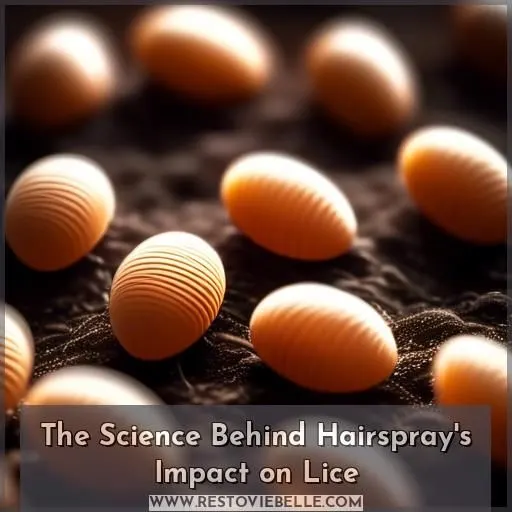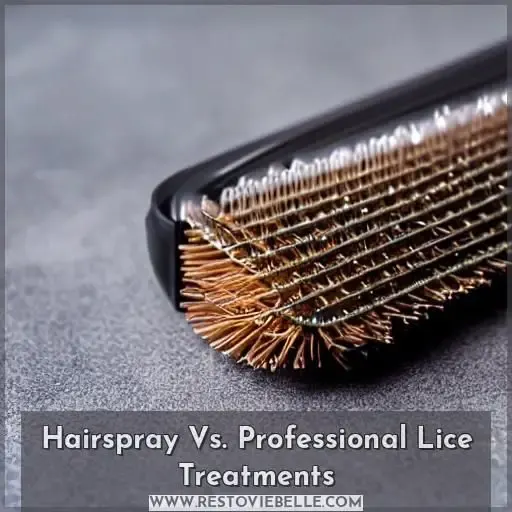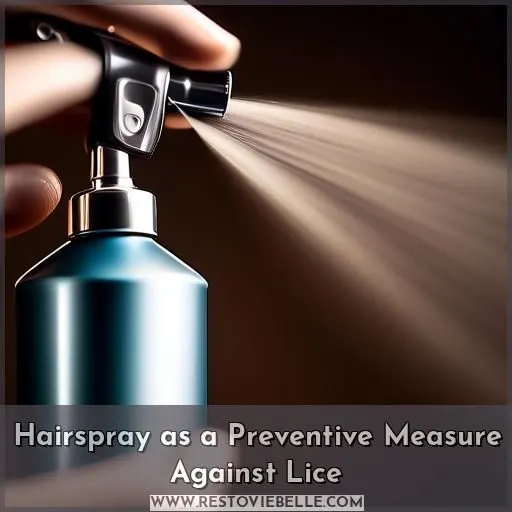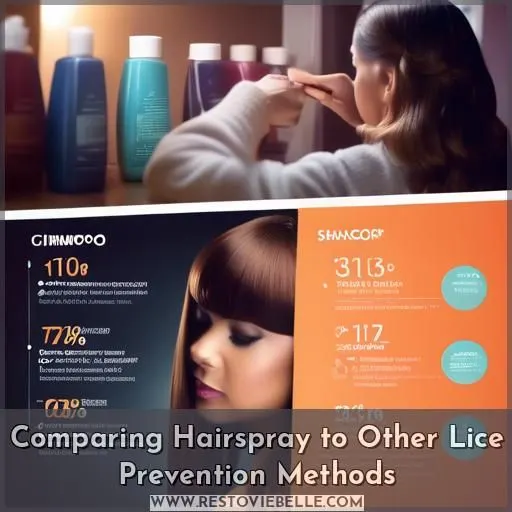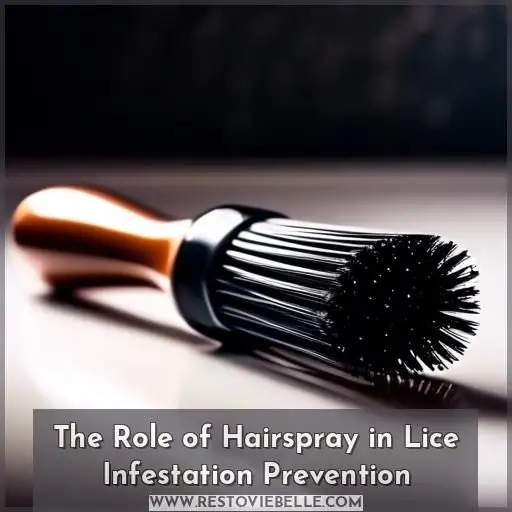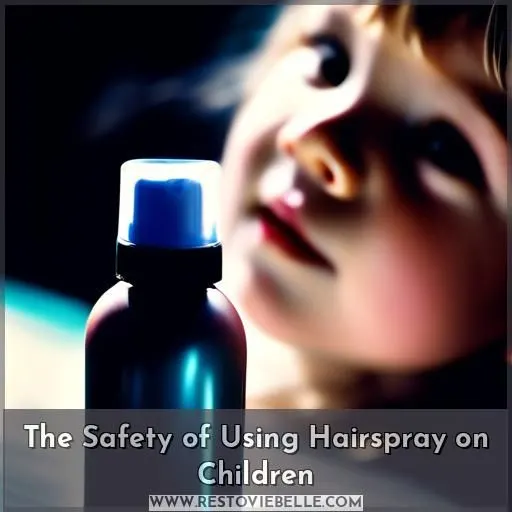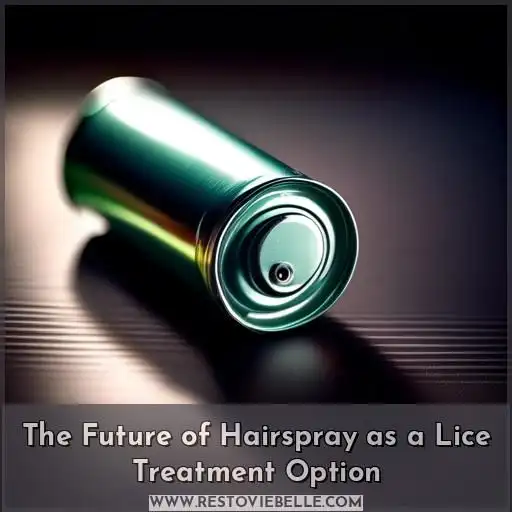This site is supported by our readers. We may earn a commission, at no cost to you, if you purchase through links.
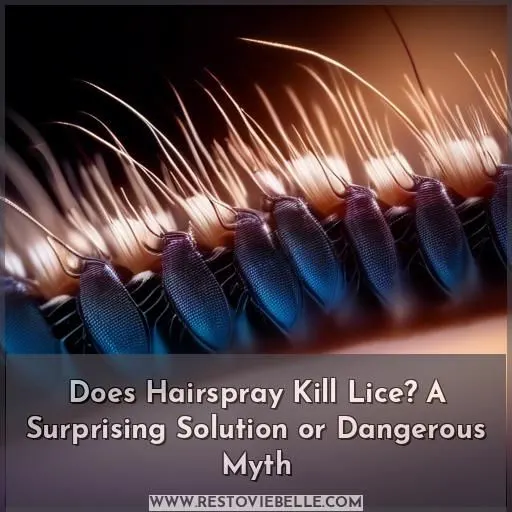
While you may have heard that hairspray can kill lice, there’s no solid scientific evidence to support this claim.
Hairspray’s sticky texture may hinder lice movement, but it likely won’t eliminate them entirely.
It can also irritate skin and eyes, interfere with lice treatment efficacy, and harm your health if inhaled.
Professional treatments offer a more effective solution with a guarantee.
However, hairspray might help deter lice as a preventive measure by creating a barrier against nits attaching to hair.
To fully understand its role, potential risks, and alternative options, further exploration is warranted.
Table Of Contents
- Key Takeaways
- Does Hairspray Kill Lice?
- Hairspray and Lice: a Myth or Reality?
- The Effectiveness of Hairspray in Killing Lice
- Hairspray as a Lice Repellent: a Closer Look
- The Science Behind Hairspray’s Impact on Lice
- Hairspray Vs. Professional Lice Treatments
- Hairspray as a Preventive Measure Against Lice
- Comparing Hairspray to Other Lice Prevention Methods
- The Role of Hairspray in Lice Infestation Prevention
- The Safety of Using Hairspray on Children
- The Future of Hairspray as a Lice Treatment Option
- Conclusion
Key Takeaways
- Hairspray may deter lice by creating a sticky barrier that hinders nit attachment, but it does not kill lice.
- Professional treatments are more effective in eliminating head lice infestations.
- Hairspray can have potential risks, such as irritating the skin and eyes, and interfering with lice treatment efficacy.
- Alternative options for lice prevention include essential oils and over-the-counter lice elimination kits.
Does Hairspray Kill Lice?
No, hairspray doesn’t kill lice. While some claim it makes the hair less appealing for lice, it’s not an effective method for killing them or their eggs.
Hairspray and Lice: a Myth or Reality?
Hairspray has been touted as a potential solution for head lice infestations, but is it more myth than reality? While it may seem like a quick fix, there’s no solid evidence to support the idea that hairspray can kill or even control head lice. In fact, relying on hairspray for lice control can lead to ineffective treatment and prolonged infestation.
The science behind hairspray’s effectiveness is limited, as studies that investigate lice treatment methods typically focus on products specifically designed for lice eradication. Lice have become resilient, and there’s no proof that hairspray affects them noticeably.
Moreover, using hairspray on children can be risky. Covering their heads with hairspray mightn’t be safe, as inhaling too much of it could be harmful, and it could irritate their skin and eyes. Additionally, having a lot of hairspray in the hair might make it harder for lice treatments to reach the lice and work properly.
The Effectiveness of Hairspray in Killing Lice
Hairspray: The Unexpected Lice Slayer?, let’s investigate the efficiency of hairspray in eradicating lice.
Hairspray has been proclaimed as a startling solution to lice infestations, but is it a myth or fact?
Hairspray’s adhesive texture makes it challenging for lice to move around and attach eggs to hair roots.
However, its safety and enduring effects on scalp well-being and hair maintenance are critical factors.
The frequency of application and suitability for various hair types also influence its effectiveness.
So, does hairspray genuinely eliminate lice?
Let’s delve deeper into the science behind this unconventional treatment.
Hairspray as a Lice Repellent: a Closer Look
Continuing from the surprising effectiveness of hairspray in combating lice, let’s zoom in on its role as a repellent. You’ve probably heard that hairspray’s texture can turn your hair into a no-go zone for nits. Here’s why:
- Hairspray texture creates a sticky barrier, thwarting nits attachment.
- Regular hairspray application before school can keep the critters at bay.
- Hairspray safety for children is paramount; thankfully, it’s a low-risk option.
- Despite the siege of school infestations, hairspray effectiveness keeps those pesky lice from setting up camp.
The Science Behind Hairspray’s Impact on Lice
Hairspray’s effectiveness in killing lice is a topic of debate. While it might seem like a quick fix, there’s no solid evidence that hairspray can kill or even control head lice. The idea that hairspray can smother lice is based on the fact that it creates a sticky, straw-like texture that lice find undesirable. However, this doesn’t mean that hairspray is an effective treatment for lice infestations.
There are several reasons why hairspray mightn’t be the best solution for lice control. First, it can be harmful to inhale, and it can irritate the skin and eyes. Second, if you do end up needing to use a real lice treatment, having a lot of hairspray in the hair might make it harder for the treatment to reach the lice and work properly.
Hairspray Vs. Professional Lice Treatments
Hairspray may not be the most effective solution for eliminating head lice.
While it might seem like a quick fix, there’s no solid evidence supporting its ability to kill or even control head lice.
In fact, relying on hairspray for lice control can lead to ineffective treatment and prolonged infestation.
Professional lice removal services, such as those provided by LiceDoctors, offer a more reliable and cost-effective solution.
These services often come with a 30-day guarantee, ensuring that the lice are completely eradicated.
In contrast, DIY lice treatments can be time-consuming and ineffective, with an average of 5-7 attempts required before success is achieved.
Additionally, professional lice removal services can be more cost-effective in the long run, as they save time and stress compared to repeated home treatments.
Hairspray as a Preventive Measure Against Lice
Hairspray is a common household item that has been proposed as a possible solution for preventing lice infestations. The idea is that the sticky texture of hairspray creates an unfavorable environment for lice, making it difficult for them to navigate and attach eggs to hair follicles. Some users have reported success with daily application of hairspray, which has prevented infestations for extended periods. However, the scientific evidence supporting the effectiveness of hairspray as a lice preventative is limited.
To understand the effectiveness of hairspray in preventing lice infestations, it’s crucial to examine the life cycle of lice. Lice lay their eggs, called nits, on the hair shafts near the scalp. These nits hatch into lice within 7-10 days, and the lice then feed on human blood. Hairspray may make it more difficult for lice to attach their eggs to the hair, but it doesn’t kill existing lice or nits. Hence, while hairspray may help prevent infestations, it isn’t a complete solution for lice control.
When using hairspray as a preventative measure, it’s essential to apply it daily, evenly throughout the hair, and reapply after washing or swimming. Regular nit checks are still recommended, especially after receiving notices from school, as hairspray alone may not prevent all infestations.
Comparing Hairspray to Other Lice Prevention Methods
Regarding preventing lice infestations, hairspray is an unexpected yet effective solution. It generates a sticky, straw-like texture that makes it challenging for nits to navigate and attach eggs to hair follicles, deterring them. Regular application of hairspray has been shown to prevent infestations, even in children who’ve received multiple nit notices from school. Hairspray has proven to be effective despite the presence of nits and hasn’t resulted in re-infestation after repeated treatments.
However, hairspray isn’t the sole option available. Other methods include using essential oils such as tea tree oil, lavender oil, and peppermint oil, which have exhibited insecticidal and repellent properties. Additionally, over-the-counter lice elimination kits containing permethrin and pyrethrin can be effective in killing lice and their eggs. It’s crucial to remember that no single method guarantees complete prevention, and regular nit checks are still recommended, especially after receiving nit notices from school.
The Role of Hairspray in Lice Infestation Prevention
Hairspray has proven to be an effective tool in the prevention of lice infestations.
By creating a sticky, straw-like texture, hairspray** makes it difficult for nits to navigate and attach eggs to hair follicles.
This has been shown to deter lice and prevent re-infestation.
Daily application of hairspray, evenly throughout the hair, has been successful in maintaining lice-free hair.
However, it’s essential to consider the safety of using hairspray, particularly on children, as the long-term effects are not yet fully understood.
The Safety of Using Hairspray on Children
As a parent, the well-being of our children is of utmost importance. Regarding the use of hairspray, there are apprehensions about its possible impact on their health. Here are five crucial points to ponder:
- Hairspray comprises chemicals: Many hair products, including hairspray, contain alcohol and other solvents that can be drying to the hair and irritating to the skin, eyes, and lungs.
- Inhalation hazards: Inhaling denatured alcohol, hydrofluorocarbons, and other hairspray ingredients may cause acute poisoning, characterized by symptoms such as low blood pressure, breathing difficulties, and coma.
- Allergic responses: Some individuals may experience skin irritation or allergic reactions to hairspray ingredients.
- Long-term consequences: The long-term health risks of hairspray products are debatable, but the immediate dangers are more evident.
- Child-friendly options: There are hairspray alternatives that are safer for children, such as those with hypoallergenic, water-based formulas that are free from fragrances, parabens, and gluten.
To safeguard the safety of your child, it’s imperative to take these factors into account and select products that minimize the risks.
The Future of Hairspray as a Lice Treatment Option
As hairspray’s popularity for treating lice escalates, scrutinizing its long-term consequences and potential resistance is imperative.
With widespread use, it’s crucial to investigate alternative applications and innovate products.
Hairspray’s resilience against lice may prompt a market shift, as consumers seek more effective and environmentally friendly solutions.
Nonetheless, the risk of resistance needs close monitoring to safeguard the ongoing effectiveness of this unorthodox treatment.
Conclusion
Ultimately, while hairspray’s sticky nature may temporarily impede lice movement, it doesn’t kill lice definitively.
Professional treatments guarantee more effective elimination.
However, hairspray could deter lice by creating a barrier against nits attaching to hair.
Before using hairspray, consider potential risks like skin irritation or inhalation hazards, and explore proven prevention methods.
Thorough research reveals hairspray’s limited role in addressing the pivotal question: Does hairspray kill lice?

